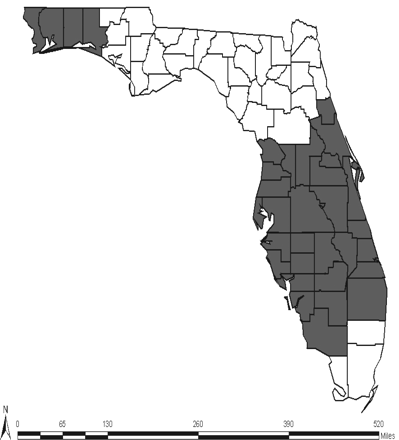Psychological sequelae resulting from the 2004 Florida hurricanes: implications for postdisaster intervention
- PMID: 17413067
- PMCID: PMC1854993
- DOI: 10.2105/AJPH.2006.087007
Psychological sequelae resulting from the 2004 Florida hurricanes: implications for postdisaster intervention
Abstract
Objectives: Data are limited regarding mental health effects of disasters such as hurricanes. We sought to determine the prevalence of and major risk factors associated with posttraumatic stress disorder (PTSD), generalized anxiety disorder, and major depressive episode 6 to 9 months after the 2004 Florida hurricanes.
Methods: Random-digit dialing was used to recruit a representative population sample of 1452 hurricane-affected adults.
Results: Posthurricane prevalence for PTSD was 3.6%, for generalized anxiety disorder was 5.5%, and for major depressive episode was 6.1%. Risk factors varied somewhat across disorders, with the exception of previous exposure to traumatic events, which increased risk of all negative outcomes.
Conclusions: Storm exposure variables and displacement were associated primarily with PTSD. Notably, high social support in the 6 months preceding the hurricanes protected against all types of disorders.
Figures
References
-
- Centers for Disease Control and Prevention. Epidemiologic assessment of the impact of four hurricanes—Florida, 2004. MMWR Morb Mortal Wkly Rep. 2005; 54:693–697. - PubMed
-
- McCann DGC. Florida Hurricanes 2004: Models of Integration Between FL-1 DMAT and Local Hospitals. Fort Walton Beach, Fla: Disaster Medical Assistance Team; 2005
-
- National Oceanic and Atmospheric Administration. NOAA provides wrap-up on very active 2004 Atlantic Hurricane season. November 30, 2004a. Available at: http://www.noaanews.noaa.gov/stories2004/s2347.htm. Accessed July 20, 2005.
-
- Bell G, Goldenberg S, Landsea C, et al. The 2004 North Atlantic hurricane season: A climate perspective. Available at: http://www.cpc.noaa.gov/products/expert_assessment/hurrsummary_2004.pdf. Accessed July 20, 2005.
-
- Norris FH, Friedman MJ, Watson PJ, Byrne CM, Diaaz E, Kaniasty K. 60,000 disaster victims speak, part I: an empirical review of the empirical literature, 1981–2001. Psychiatry. 2002;65:207–239. - PubMed
Publication types
MeSH terms
Grants and funding
LinkOut - more resources
Full Text Sources
Medical


